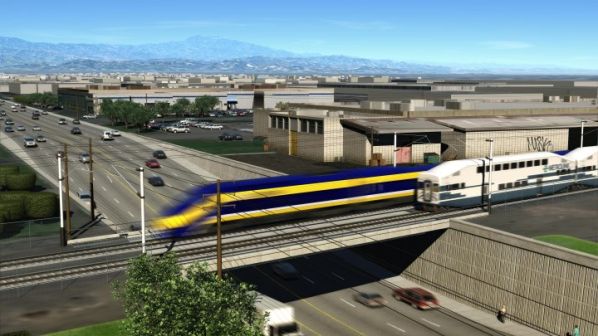Large energy storage project would create new reservoir above Isabella Lake
A $3 billion pumped-water energy storage project has been proposed along Isabella Lake that would help even out power delivery from California solar and wind farms at a volume and longevity dwarfing the large battery installations envisioned for eastern Kern. The Federal Energy Regulatory Commission is reviewing a Walnut engineering company’s plan to create a new reservoir above the lake then use pumps and underground pipes to turn it into a rechargeable dam and hydroelectric generator putting out a whopping 2,000 megawatts of power for up to 12 hours at a time.
Optimistically, the project could open within six years but remains in such an early stage that its environmental impacts haven’t been studied and its eventual owners or operators haven’t been identified, said the head of the company behind the proposal, Power Tech Engineers Inc., whose principals have experience with similar projects elsewhere. President Victor Rojas suggested the installation might serve best as a government asset even as it would serve electric utilities and their customers.
He said the U.S. Department of Energy has expressed interest in covering up to 70 percent of the project’s cost. The agency did not respond to an email Monday afternoon requesting confirmation of an offer of financial backing. Also, a FERC official reviewing Power Tech’s proposal could not be reached for comment. Pumped-storage hydroelectric, as such projects are known, is among many forms of energy storage under consideration as California looks to provide clean, renewably sourced power even when solar and wind installations aren’t generating electricity.
Gravity-powered projects like Power Tech’s proposal offer benefits and drawbacks different from the kind of batteries proposed to be sited alongside massive solar arrays planned for eastern Kern. Pumped-water storage offers huge scale and lifetime of maybe 100 years but it cannot instantaneously produce power and it disrupts large areas of habitat. Batteries immediately deliver when called on but have a relatively short life — generally less than two decades — and can’t provide electricity for more than a few hours at utility scale. For size comparison, 8minute Solar Energy’s 400-megawatt, more than $1 billion Eland photovoltaic array proposed in eastern Kern would come with 1,200 megawatt-hours of energy storage — just 5 percent the capacity of Power Tech’s pumped-water project.
Kern River Master Dana Munn, who oversees water storage and flow at Isabella Lake, expressed concern Power Tech’s project would interfere with the flow of water from the lake down the river. “A power plant will go on and it’ll essentially cause a fluctuation in the river,” he said. Rojas disputed that interpretation, saying the project would use a “closed-loop” design that shouldn’t affect the lake or the river much once it is equipped with between 30,000 and 40,000 acre-feet of water.
Membrane would be installed beneath the water’s downward flow to reduce water loss to percolation, he said, and there would be a covering above, possibly including solar panels, to limit evaporation. Rojas said three alternative sites are under consideration for siting the upper reservoir. If the “small lake” that would be created is deemed to have too great an impact on animals and plants there now, he said, “we’ll look somewhere else.” But his hope is that the benefit becomes clear. “Without projects like this the renewable energy solution won’t be possible,” he said. “We have to have a way to store the energy when the sun is not shining (and) the wind is not blowing.” He added that informational workshops for the public will be scheduled later allowing people to learn more about the project. He said Power Tech’s engineers, formerly with the Los Angeles Department of Water and power, have designed pumped-water energy projects in Castaic and elsewhere.
Rosemead-based utility Southern California Edison and the nonprofit California Independent System Operator, which operates the state’s power grid, said separately they were not familiar with Power Tech’s proposal but that they support a diverse mix of energy-storage projects. Pacific Gas and Electric Co. declined to comment on the project.

